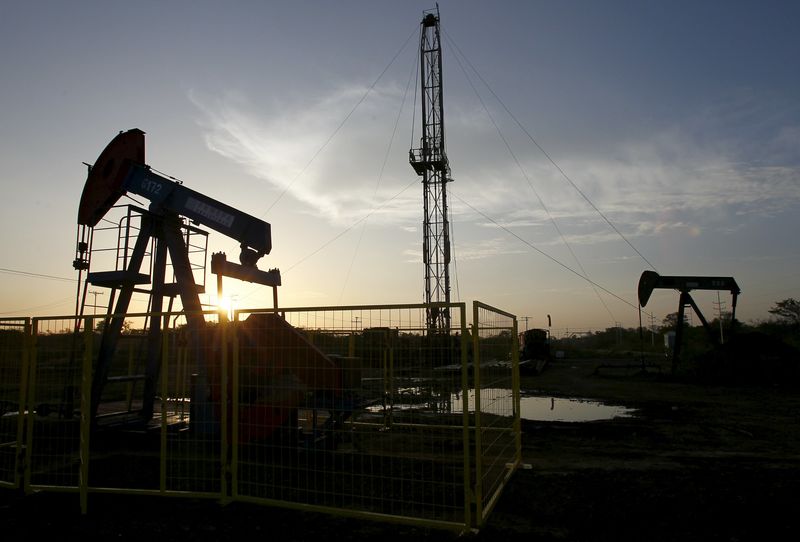By Henning Gloystein
SINGAPORE (Reuters) - A year ago, after oil prices had halved in six months, analysts were forecasting a price recovery in 2015 while many traders were busy shorting the market.
As it turned out, the traders were correct and oil prices fell by another third this year. Analysts have now forecast a pick-up in prices over 2016, while traders built short positions on U.S. oil futures to a record in early December. <1067651MSHT>
The difference in the two views is on what happens in response to an oil output surplus that has been estimated as high as 2 million barrels per day (bpd) by some analysts.
Many analysts expect a price recovery towards the end of 2016 to pull up the average for the full year, with production - especially in the United States - falling as drillers succumb to debt and low revenues.
But traders say analysts based their outlooks for 2015 on similar reasoning and are calling it wrong again for 2016, with oil producers cutting costs to both survive over the long haul and keep pumping oil at low prices to service debt.
"The party (of past high oil prices) is over, at least for the next two to three years," said Oystein Berentsen, managing director of crude oil at trading company Strong Petroleum <0852.HK> in Singapore, arguing that oil companies have cut costs to get ready to live with lower prices for years to come.
With markets tanking in December, and Brent (LCOc1) hitting an 11-year low just under $36 per barrel, some analysts are also starting to show signs of reviewing their forecasts.
U.S. investment bank Morgan Stanley (N:MS) said in its latest note, published before Christmas and headlined "Headwinds Growing for 2016 Oil", that "the hope for a rebalancing in 2016 continues to suffer serious setbacks".
Still, analysts would have to lower their forecasts sharply to reverse expectations for a price recovery in 2016. The latest Reuters survey of 31 analysts showed an average price forecast for Brent for next year at $57.95 a barrel, more than $20 above current prompt market values.
And most analysts hold to the idea that production cuts will turn the market around in the coming year.
"We are likely getting closer to a more balanced market," said Ric Spooner, chief market analyst at CMC Markets, adding that he expected Brent to average $45 a barrel while warning that there would be high volatility.
Yet the market is showing few signs of faith in a recovery even in late 2016.
The Brent forward curve shows a price increase of under $7 per barrel between contracts for delivery in February 2016 and those expiring in the following December, a much narrower spread than in previous downturns and reflecting little trust in any increase over the year, traders said.
Meanwhile, the average value for monthly 2016 Brent contracts is $40.89 per barrel, just $3.50 above current prices and well below the analysts' forecasts for the year's average.
The U.S. West Texas Intermediate (WTI) (CLc1) forward curve is almost the same, already factoring in a flip into a premium over Brent that reappeared for the first time in years this month, but which has yet to be reflected in most analyst forecasts.
Over 2015, Brent and WTI crude prices have averaged $53.60 and $48.76 per barrel, respectively, as of Dec. 31.
Out of the pool of analysts polled by Reuters on their outlooks around a year ago, the forecast that came closest to those numbers was Citigroup's, with expectations that Brent and WTI in 2015 would average $63 and $55 per barrel.

All other forecasts expected prices to recover more steeply, only to see the market extend the rout that began in June 2014 for another 12 months.